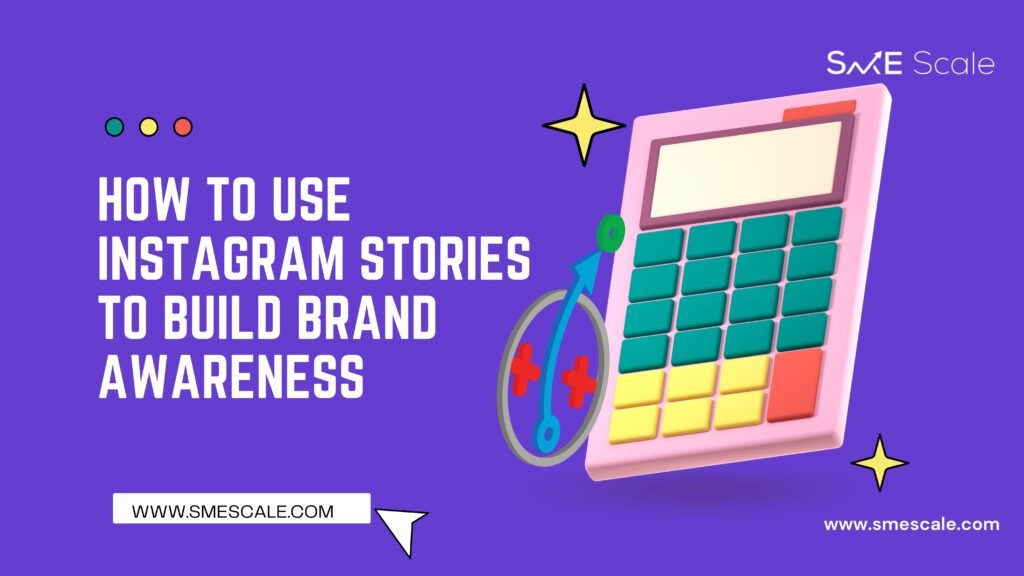
Instagram Stories have revolutionized the way businesses engage with their audiences. With over 500 million daily active users, this feature offers a dynamic and interactive way for small and medium enterprises (SMEs) to build brand awareness and foster stronger connections with their target audience. SMEs, with their limited marketing budgets, can leverage Instagram Stories to reach a wider audience without significant financial investment. In this blog, we will explore how to use Instagram Stories effectively, drawing from real-life examples, and dive into the psychology behind why this strategy works so well.
Why Instagram Stories Matter for SMEs
Instagram Stories allow businesses to create short, ephemeral content that disappears after 24 hours. This temporary nature fosters urgency and immediacy, prompting users to engage before the content vanishes. Stories are also ideal for showcasing behind-the-scenes content, promoting limited-time offers, and encouraging user-generated content.
For SMEs, Instagram Stories provide several benefits:
Increased Engagement: Stories appear at the top of users’ feeds, making them highly visible.
Creative Tools: Instagram Stories come with interactive tools like polls, quizzes, and swipe-up links that drive engagement.
Cost-Effective Marketing: Unlike paid ads, creating Instagram Stories is free, making them a perfect tool for businesses on a budget.
The Psychology Behind Instagram Stories
Instagram Stories tap into psychological principles that make them highly effective for audience engagement:
FOMO (Fear of Missing Out): The 24-hour expiration period triggers a sense of urgency, encouraging users to check out the content before it disappears.
Reciprocity: When brands interact with their audience through polls, questions, or quizzes, they create a feeling of involvement. People are more likely to engage when they feel like they’re contributing to a conversation or making an impact.
Personalization: Instagram Stories give businesses the ability to showcase more authentic, humanized content, which helps establish trust and emotional connection with their audience.
Real-Life Case Study: SME Using Instagram Stories to Build Brand Awareness
Case Study: Blossom Coffee Roasters
Blossom Coffee Roasters, a small coffee shop based in Portland, Oregon, sought to increase brand awareness and differentiate itself from larger competitors. They decided to leverage Instagram Stories to engage with their local audience. Here’s how they did it:
1. Behind-the-Scenes Content
Blossom Coffee Roasters regularly posted Instagram Stories showing their roasting process, giving viewers a peek into the craftsmanship behind their coffee. This type of content humanized their brand and gave followers a sense of exclusivity by showing them content they wouldn’t typically see elsewhere.
2. User-Generated Content
The shop encouraged customers to share photos of their coffee and tag the brand in their Stories. Blossom Coffee Roasters would then repost these customer stories, adding a personal touch while creating a cycle of engagement. This strategy not only increased customer loyalty but also extended their reach by tapping into their followers’ networks.
3. Interactive Polls and Quizzes
To further drive engagement, Blossom Coffee Roasters frequently used Instagram’s interactive tools. For example, they ran polls asking customers to vote on new seasonal flavors or choose the next promotion. These polls created an interactive experience that made customers feel like they had a say in the business.
Results:
Within three months, Blossom Coffee Roasters saw a 25% increase in Instagram followers and a 15% boost in in-store traffic driven directly by Instagram.
Their Instagram Story polls had an average engagement rate of 60%, showing high interaction from their audience.
Strategies for SMEs to Use Instagram Stories for Brand Awareness
If you’re an SME looking to boost your brand awareness using Instagram Stories, here are some practical strategies to get started:
1. Show Behind-the-Scenes
Humanize your brand by showcasing behind-the-scenes content that gives users insight into your daily operations. Whether it’s showing how products are made, office life, or team members, this type of content builds trust and authenticity.
2. Create Interactive Content
Use Instagram’s interactive features such as polls, quizzes, and countdown timers to encourage engagement. These tools not only make your content more interactive but also provide valuable insights into what your audience likes.
3. Leverage User-Generated Content
Encourage your customers to create and share content featuring your product or service. Repost their content to your own Stories to build community and extend your brand’s reach.
4. Use Hashtags and Location Tags
To increase visibility, always include relevant hashtags and location tags in your Stories. This will help new users discover your business when searching for local businesses or specific hashtags.
5. Highlight Important Stories
Since Stories disappear after 24 hours, you can save key Stories in your Highlights section. Use Highlights to categorize content into collections such as customer testimonials, product demos, or FAQs, making it easier for new followers to learn about your brand.
Conclusion
Instagram Stories offer an incredibly effective and cost-efficient way for SMEs to build brand awareness and engage with their audience. By incorporating behind-the-scenes content, interactive elements, and user-generated content, SMEs can create a dynamic and engaging Instagram presence.
As demonstrated by Blossom Coffee Roasters, small businesses can use Instagram Stories to grow their following, increase customer engagement, and ultimately drive more business. With the right strategy and a consistent approach, SMEs can compete with larger brands and establish a strong presence on one of the world’s most popular social media platforms.

